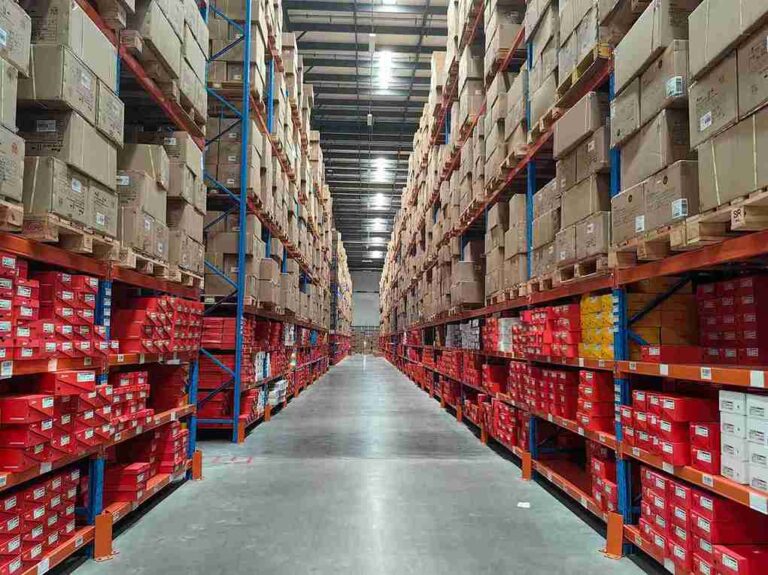📐 "First 50 Enterprise Queries Get Custom 3D Warehouse Design" Plan

Introduction
In the high-stakes world of automotive manufacturing and distribution, automotive racking systems serve as the backbone of efficient operations. These specialized storage solutions are designed to handle everything from delicate electronic sensors to massive engine blocks, ensuring that every component is stored securely, accessed quickly, and moved efficiently.
For warehouses, assembly plants, and distribution centers handling automotive parts and components, the right automotive racking system can mean the difference between streamlined productivity and costly inefficiencies. This comprehensive guide explores the most effective automotive racking systems, their benefits, and how businesses can select the ideal setup for their unique storage needs.

1. The Critical Role of Automotive Racking Systems in Modern Warehousing
1.1 Why Automotive Parts Storage Demands Specialized Racking
Unlike general warehouse storage, automotive racking systems must accommodate:
-
Extreme weight variations (from lightweight gaskets to multi-ton transmissions)
-
Irregularly shaped components (exhaust pipes, bumpers, dashboards)
-
High inventory turnover rates (just-in-time manufacturing requirements)
-
Strict safety regulations (OSHA compliance for heavy load storage)
Without purpose-built automotive racking, facilities face:
❌ Dangerous storage conditions (improperly supported loads)
❌ Wasted vertical space (underutilized warehouse height)
❌ Slower order fulfillment (disorganized storage layouts)
1.2 How Automotive Racking Systems Drive Operational Efficiency
Properly implemented automotive racking solutions deliver measurable benefits:
✔ 30-60% increase in storage density
✔ 40% faster parts retrieval times
✔ Reduced damage rates for sensitive components
✔ Optimized workflows for assembly line replenishment
2. Comprehensive Breakdown of Automotive Racking System Types
2.1 Selective Pallet Racking – The Workhorse of Automotive Storage
As the most widely used automotive racking system, selective pallet racking offers unmatched versatility for:
-
Engine and transmission storage
-
Tire and wheel assemblies
-
Bulk container storage
Key Advantages:
-
Instant access to every pallet
-
Easy reconfiguration as inventory needs change
-
Proven durability for 20+ years of service
2.2 Cantilever Racking – The Champion for Long, Bulky Components
Specifically engineered for challenging automotive parts storage, cantilever systems excel at holding:
-
Vehicle frames and chassis
-
Exhaust systems and piping
-
Body panels and door assemblies
Unique Features:
-
Column-free front access for easy loading
-
Adjustable arms (from 18″ to 20′ lengths)
-
Heavy-duty capacity (up to 10,000 lbs per arm)
2.3 Drive-In/Drive-Through Racking – High-Density Automotive Storage
For facilities storing large quantities of identical automotive components, these systems:
-
Eliminate aisles for maximum space utilization
-
Support FIFO or LIFO inventory management
-
Ideal for battery stacks and other uniform items
2.4 Mezzanine Systems – Vertical Expansion for Automotive Parts
When floor space is constrained, automotive racking mezzanines create additional levels for:
-
Small parts storage (electrical components, fasteners)
-
Quality control stations
-
Kitting and assembly areas
2.5 Automated Storage Solutions – The Future of Automotive Racking
Cutting-edge automotive racking systems now incorporate:
-
Robotic retrieval arms for high-speed picking
-
AI-powered inventory tracking
-
Automated guided vehicles (AGVs) for part transportation
3. Selecting the Optimal Automotive Racking System: A Buyer’s Guide
3.1 Assessing Your Automotive Storage Requirements
Before choosing an automotive racking system, consider:
-
Peak inventory volumes
-
Average component weights and dimensions
-
Required access frequency
-
Future expansion plans
3.2 Material Considerations for Automotive Racking
-
Heavy-gauge steel for structural components
-
Powder-coated finishes for corrosion resistance
-
Reinforced uprights for seismic zones
3.3 Safety Features Non-Negotiables
All automotive racking systems must include:
✅ Load capacity placards
✅ Column protectors
✅ Seismic bracing where required
✅ Anti-collapse safety locks
3.4 Cost Analysis: Balancing Budget and Performance
While basic automotive racking systems start at $15/sqft, premium automated solutions can reach $200/sqft. The ROI calculation should factor:
-
Labor savings from improved efficiency
-
Damage reduction benefits
-
Increased storage capacity value
4. Industry-Leading Automotive Racking System Providers
4.1 Top-Tier Manufacturers
-
Steel King Industries (heavy-duty structural racking)
-
Ridg-U-Rak (custom cantilever specialists)
-
Hannibal Industries (high-density solutions)
4.2 Emerging Innovators
-
AutoStore (cube-based automation)
-
Dematic (AS/RS technology)
-
Kardex Remstar (vertical lift modules)
5. The Evolution of Automotive Racking Technology
5.1 Smart Racking Systems
Modern automotive racking solutions now feature:
-
IoT-enabled load sensors
-
Automated inventory tracking
-
Predictive maintenance alerts
5.2 Sustainable Storage Solutions
Eco-conscious automotive racking systems incorporate:
-
Recycled steel construction
-
Energy-efficient lighting integration
-
Solar-ready designs
Conclusion: Transforming Automotive Storage with the Right Racking System
The strategic implementation of automotive racking systems represents one of the most impactful investments an auto parts facility can make. From basic selective racking to advanced automated systems, today’s solutions offer unprecedented levels of efficiency, safety, and scalability.
For operations managers seeking to optimize their automotive parts storage, the key lies in carefully matching racking system capabilities with specific operational requirements. Those who invest in the right automotive racking infrastructure position their facilities for long-term success in an increasingly competitive industry.
FAQs: Expert Answers on Automotive Racking Systems
1. What’s the maximum height for automotive racking systems?
Modern automotive racking can extend up to 50 feet, though most facilities utilize 20-30 foot configurations for optimal accessibility.
2. How often should automotive racking systems be inspected?
OSHA mandates annual inspections, but high-traffic automotive parts warehouses should conduct quarterly checks.
3. Can existing racking be modified for automotive storage?
While possible, retrofitting general-purpose racking for automotive components often proves less cost-effective than purpose-built systems.
4. What racking works best for hybrid warehouses storing both auto parts and other goods?
Combination facilities benefit from selective pallet racking with adjustable beam levels to accommodate diverse product types.
5. How do automated automotive racking systems handle irregularly shaped parts?
Advanced systems utilize customizable bins and cradles paired with intelligent software that maps optimal storage positions.




